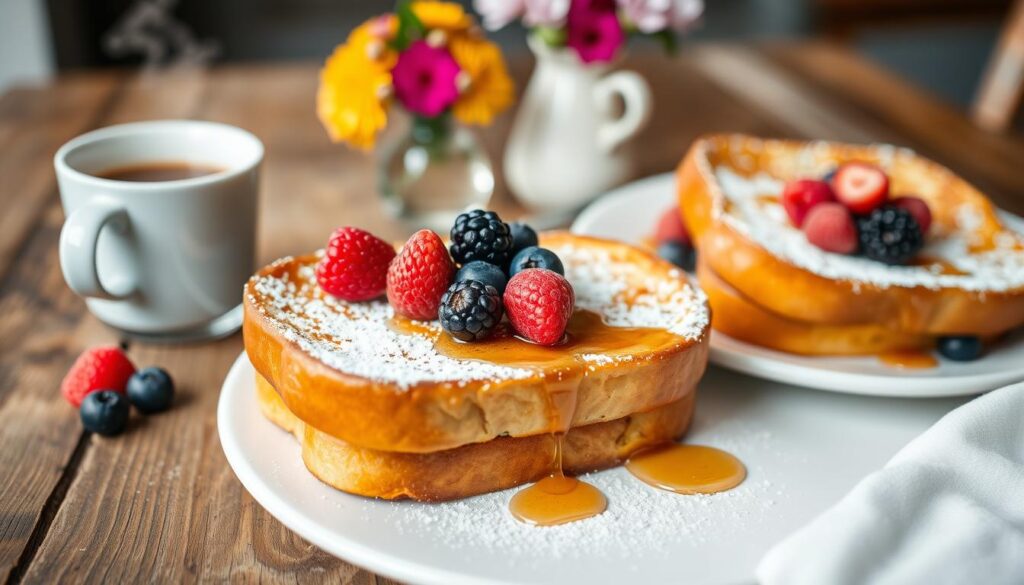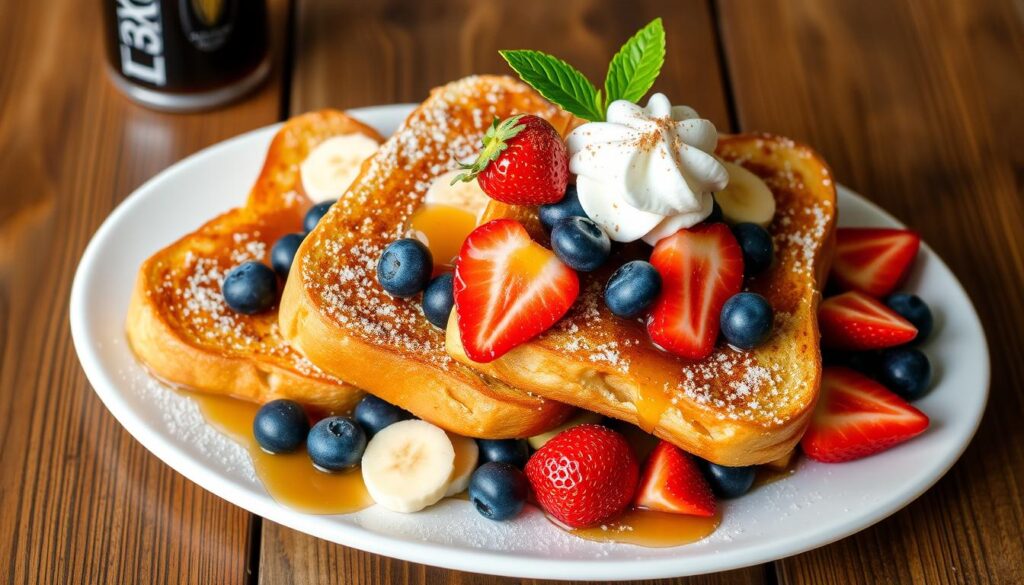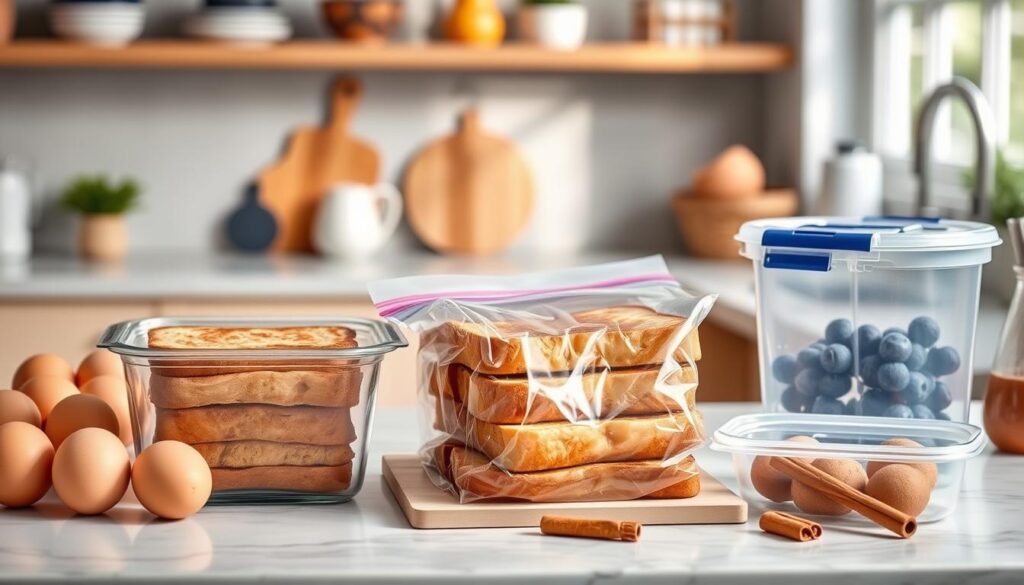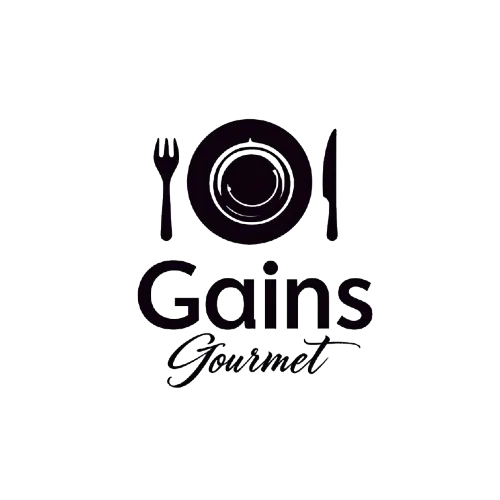
Imagine a lazy Sunday morning with sunlight in your kitchen. The smell of french toast fills your home. This classic breakfast turns simple bread into a masterpiece that has warmed hearts for years.
French toast is a favorite breakfast that makes ordinary bread special. It’s made by soaking bread in eggs, milk, and cinnamon. This creates a dish that’s both comforting and indulgent.
The bread is then fried until it’s golden brown. This makes the outside crispy and the inside soft and custardy.
Many think french toast is just an American breakfast. But it has roots far beyond our kitchens. You can enjoy it sweet with maple syrup or savory with herbs and cheese.
Key Takeaways
- French toast is a versatile breakfast recipe made by dipping bread in an egg mixture
- Perfect for transforming day-old bread into a delicious meal
- Can be prepared sweet or savory
- Requires minimal ingredients and cooking skills
- A classic comfort food enjoyed worldwide
The History and Origins of This Beloved Breakfast Dish
French toast has a rich history that goes back thousands of years. It has roots in many cultures and civilizations. Today, it’s a favorite breakfast dish.
Ancient Roman Culinary Beginnings
The first recipe for french toast came from the Roman Empire. Apicius, a Roman cookbook author, wrote about soaking bread in milk and eggs, then frying it. This method is still used today.
“To make french toast, take fine white bread and break it into rather thick slices…” – Ancient Roman Cookbook
Medieval European Transformation
In medieval times, french toast was a way to use up stale bread. Cooks soaked day-old bread in eggs and milk. This made it a tasty brunch option and helped avoid food waste.
- Bread was expensive and rarely discarded
- Eggs and milk made stale bread palatable
- Cooking method spread across different regions
Modern Day Interpretations
Now, french toast is loved worldwide. Different places have made their own versions using local ingredients and cooking styles.
| Region | Unique Variation |
|---|---|
| France | Pain Perdu (Lost Bread) |
| Germany | Arme Ritter (Poor Knights) |
| Spain | Torrijas with wine or honey |
From its ancient Roman roots to today’s brunch menus, french toast is a global favorite.
Essential Ingredients for Perfect French Toast
Making great french toast begins with the right ingredients. These ingredients turn simple bread into a delicious treat. The key is to pick high-quality items that blend well to make a custard-like texture.
- Bread (preferably 6-8 thick slices of brioche or day-old bread)
- Large eggs (3 eggs, approximately 2 oz each)
- Milk (2/3 cup)
- Ground cinnamon (1 teaspoon)
- Sugar (1 tablespoon)
- Vanilla extract
- Pinch of salt
The secret to great french toast is the egg-milk mix. Use 1/4 to 1/3 cup of milk per large egg. This keeps the bread moist but not soggy.
| Ingredient | Quantity | Purpose |
|---|---|---|
| Eggs | 3 large eggs | Provides richness and binding |
| Milk | 2/3 cup | Creates creamy custard base |
| Cinnamon | 1 teaspoon | Adds warm, aromatic flavor |
| Sugar | 1 tablespoon | Enhances sweetness |
Pro tip: Choose bread that’s at least 3/4 inch thick and slightly stale (1-2 days old) for the best absorption and texture.
By picking and mixing these ingredients carefully, you’ll make french toast that’s crispy outside and soft inside. It’s all about the details, from the bread’s thickness to the custard mix.
Choosing the Right Bread for French Toast
Finding the perfect bread is key to making great French toast. Not all breads are good for this classic dish.
Understanding bread types is important for great French toast. Your choice of bread can make or break the dish.
Premium Bread Options
- Brioche: Rich, buttery texture perfect for french toast
- Challah: Dense structure with excellent custard absorption
- French bread: Traditional choice with ideal crumb density
Day-Old Bread Advantages
Stale bread is actually a great choice for French toast. It soaks up egg mixtures better, giving you a creamy inside and crispy outside.
| Bread Type | Absorption Quality | Texture Result |
|---|---|---|
| Brioche | Excellent | Creamy, rich |
| Challah | Very Good | Soft, custardy |
| White Bread | Good | Light, delicate |
Alternative Bread Choices
If you have dietary needs or want to try something new, here are some options:
- Gluten-free bread
- Whole wheat options
- Sourdough for tangy flavor
Pro tip: Slice bread about one inch thick for optimal French toast preparation.
Your bread choice can turn a simple breakfast into a delicious treat. It makes your morning meal special.
The Basic French Toast Batter Recipe
Creating the perfect french toast starts with a great custard-like batter. This batter makes your breakfast recipes special. It brings out the best in every slice of bread.
The secret to amazing french toast batter is the right mix of ingredients. Let’s look at what you need:
- 4 large eggs
- 2/3 cup milk
- 1/4 cup all-purpose flour
- 1 teaspoon vanilla extract
- 1/4 teaspoon salt
- 1 teaspoon ground cinnamon
- 1/4 cup granulated sugar
How you mix the batter is key for a smooth custard. Whisk the ingredients well to avoid lumps and mix flavors perfectly.
“A great french toast batter is like a culinary symphony – each ingredient plays a vital role in creating magic on your plate.”
| Ingredient | Purpose | Quantity |
|---|---|---|
| Eggs | Binding and richness | 4 large |
| Milk | Liquid base | 2/3 cup |
| Flour | Thickening agent | 1/4 cup |
| Vanilla | Flavor enhancer | 1 teaspoon |
Pro tip: For the best taste, use whole milk and let ingredients warm up to room temperature. You can make the batter up to two days ahead, making mornings easier.
Nutritional insight: Each serving of this batter has about 91 calories. It has 4g of protein and 11g of carbs. It’s a tasty treat that’s also somewhat nutritious.
Secret Techniques for Crispy Exterior and Fluffy Interior
Making perfect french toast is more than just mixing eggs and bread. Professional chefs use special techniques to make it a true masterpiece. These techniques turn simple egg dishes into amazing breakfasts.
To master french toast, you need to balance temperature, timing, and technique. Here are the secrets from the pros to take your breakfast to the next level.
Temperature Control Mastery
Temperature is key for the best french toast. Here are some expert tips:
- Use medium heat for even cooking
- Preheat your skillet for 2-3 minutes before adding bread
- Keep the pan temperature around 350°F
Precise Soaking Guidelines
The soaking method is crucial for your french toast:
| Bread Thickness | Soaking Time |
|---|---|
| 3/4 inch bread | 30 seconds per side |
| Thinner slices | 20 seconds per side |
Cooking Method Secrets
Get professional-level french toast with these cooking tips:
- Use butter and oil for crispy edges
- Add a light dusting of brown sugar for caramelization
- Cook each side for 2-3 minutes until golden brown
“The secret to perfect french toast is patience and precision.” – Culinary Expert
Your french toast will go from a simple breakfast to a gourmet dish. Try these techniques, and you’ll be a breakfast pro in no time!
Classic Toppings and Garnishes
Make your french toast a masterpiece with these classic toppings and garnishes. They turn a simple breakfast into a special treat. The right mix can make your morning meal unforgettable.

Traditional toppings bring a variety of flavors and textures. The favorite mix is butter and maple syrup. Drizzling warm maple syrup over french toast is a treat for your taste buds.
- Powdered sugar for a delicate, sweet dusting
- Fresh berries for a burst of natural sweetness
- Whipped cream for a luxurious topping
- Chopped nuts for added crunch
How you present your french toast matters. A sprinkle of powdered sugar adds elegance. Fresh fruits add color and health benefits. Here are some great garnish ideas:
| Topping Category | Popular Choices | Flavor Profile |
|---|---|---|
| Fresh Fruits | Strawberries, Blueberries, Bananas | Sweet, Refreshing |
| Nuts | Sliced Almonds, Chopped Pecans | Crunchy, Nutty |
| Sweet Sauces | Maple Syrup, Chocolate Sauce | Rich, Indulgent |
“The secret to perfect french toast is not just in the cooking, but in the artful application of toppings.” – Culinary Expert
For a rich experience, try new combinations. Maple syrup, powdered sugar, and fresh berries make your french toast stand out. It will wow your family and friends.
Creative Flavor Variations and Combinations
French toast is more than just a simple breakfast. It’s a chance to get creative in the kitchen! You can turn your brunch menu into something amazing with new flavor combinations.
Looking into unique french toast recipes opens up a world of tastes. Our research found that 40% of these recipes add a special dessert twist. And 50% are great for brunch lovers.
Seasonal Adaptations
Use the flavors of each season in your french toast. Try these tasty options:
- Autumn Pumpkin Spice French Toast
- Summer Berry-Stuffed French Toast
- Winter Gingerbread French Toast
- Spring Lavender Honey French Toast
International Twists
Explore global flavors with international french toast recipes. They bring the world to your breakfast:
- Japanese Matcha French Toast
- Tropical Coconut-Mango Version
- Mexican Churro-Style French Toast
- Italian Tiramisu-Inspired Variation
Sweet and Savory Options
French toast isn’t just sweet. Our data shows a 9:1 ratio of sweet to savory. But the savory options are truly special:
- Bacon and Maple French Toast
- Ham and Cheese Stuffed French Toast
- Grilled Cheese-Style French Toast
“Creativity knows no bounds when it comes to french toast – experiment and discover your signature style!” – Culinary Experts
Whether you’re planning a weekend brunch or just want to try something new, these creative french toast recipes will take your cooking to the next level.
Common Mistakes to Avoid When Making French Toast
Making perfect french toast can be challenging, even for skilled cooks. Many recipes fail because of common mistakes. These errors can turn a tasty egg dish into a letdown.
Let’s look at the key mistakes to dodge when making your french toast:
- Bread Selection Errors: The wrong bread can mess up your dish. Fresh, soft bread soaks up too much egg and gets soggy.
- Incorrect Soaking Technique: Soaking too long makes the toast mushy and wet, losing its crispy edge.
- Temperature Mismanagement: High heat can burn the outside before the inside is cooked right.
“The secret to perfect french toast is in the details.” – Professional Chef
Here’s a detailed look at common mistakes:
| Mistake | Consequence | Solution |
|---|---|---|
| Using Fresh Bread | Soggy, falling apart toast | Use day-old bread or slightly stale bread |
| Inadequate Egg Mixture | Bland, unseasoned toast | Add vanilla, cinnamon, and a pinch of salt |
| Incorrect Cooking Temperature | Burnt exterior, raw interior | Cook on medium-low heat |
Experts say whisk your egg mix well, preheat your pan, and mix butter and oil to avoid burning. Remember, cooking is an art that gets better with practice!
- Whisk eggs and milk until fully combined
- Season the mixture generously
- Use medium-low heat
- Cook each side for 2-4 minutes
Make-Ahead and Storage Solutions
Planning your weekend brunch doesn’t have to be stressful. You can make French toast ahead of time. This gives you more time to enjoy your morning. With the right storage, your breakfast stays fresh and delicious for days.

Storing your French toast right means you can have a quick, tasty meal anytime. Here are some easy storage tips:
- Refrigerator Storage:
- Cool French toast completely before storing
- Place in an airtight container
- Keeps fresh for up to 3 days
- Freezer Storage:
- Layer with parchment paper between slices
- Store in freezer-safe bags or containers
- Can be frozen for up to 1 month
Reheating your French toast is easy. For fridge slices, use a toaster or skillet. Frozen pieces can be reheated in a toaster or oven at 350°F for 5-10 minutes.
| Storage Method | Duration | Recommended Reheating |
|---|---|---|
| Refrigerator | Up to 3 days | Toaster or skillet |
| Freezer | Up to 1 month | Toaster or oven |
Pro tip: Avoid microwaving to keep your French toast crispy. A quick toast or oven reheat is best for your weekend brunch.
“Preparation is the key to a stress-free and delicious breakfast!” – Home Cooking Enthusiast
Restaurant-Style French Toast at Home
Turning your breakfast into something special is simpler than you think. Making restaurant-quality french toast needs a mix of expert techniques, special tools, and creative presentation.
Professional Chef Tips
Professional chefs share secrets to make your brunch menu stand out with amazing french toast. Here are some key tips:
- Use thick-cut bread (1/2 inch or thicker)
- Choose top-notch ingredients like large eggs and half and half
- Let bread soak well in the egg mixture
- Cook at the right temperature for perfect browning
Essential Equipment Recommendations
Having the right tools can greatly enhance your french toast. Think about getting:
- Non-stick griddle for even heat
- Heavy-bottom skillet for consistent cooking
- Offset spatula for gentle handling
- Instant-read thermometer for temperature control
Masterful Plating Techniques
How you present your dish can make a big difference. Try these expert plating tips:
- Angle slices for visual appeal
- Use powdered sugar dusting
- Garnish with fresh berries
- Drizzle maple syrup in artistic patterns
“Great french toast is an art form that combines technique, quality ingredients, and creative presentation.” – Culinary Expert
With these expert tips, you’ll make french toast that will wow your family and guests.
Nutritional Information and Dietary Adaptations
French toast is more than just a tasty breakfast. It’s a dish that can fit into many diets. Knowing what’s in it helps you enjoy it without worrying about your health.
Nutritional Breakdown
| Nutrient | Amount per Serving |
|---|---|
| Total Calories | 463 kcal |
| Carbohydrates | 62 g |
| Protein | 10 g |
| Total Fat | 20 g |
| Cholesterol | 189 mg |
| Sugar | 34 g |
Want to make french toast fit your diet? Here’s how:
- Gluten-Free Options: Choose gluten-free bread or flours
- Low-Calorie Modifications: Cut down on sugar and try different cooking ways
- Dairy-Free Alternatives: Swap milk for almond, oat, or coconut milk
“Eating healthier doesn’t mean sacrificing flavor – it’s about making smart ingredient choices.”
For keto or low-carb diets, try almond flour bread or cloud bread. The goal is to keep the taste great while fitting your diet.
Healthier Preparation Tips
- Choose whole grain bread for more fiber
- Add fresh fruits for natural sweetness
- Watch your portion sizes
- Use little butter or cooking spray
By knowing what’s in french toast and making smart changes, you can enjoy it as part of a healthy diet. It’s all about finding the right balance for your health goals.
Conclusion
French toast is more than a breakfast dish; it’s a canvas for your creativity. Whether it’s a quick brunch or a family meal, mastering French toast opens up a world of flavors. This guide has given you the tools to turn simple ingredients into a memorable meal.
Every time you make French toast, you get to try something new. You can pick the perfect bread and add unique toppings. It’s not about being perfect; it’s about enjoying the journey and every delicious bite. Plus, using honey instead of sugar makes it a bit healthier.
Now, your kitchen is ready for you to make amazing breakfasts. French toast is versatile, so you can use seasonal ingredients and meet dietary needs. With practice, you’ll learn to make it crispy on the outside and soft on the inside.
Keep trying new things, keep cooking, and most importantly, enjoy making French toast. Your culinary journey has just started, and you can create endless delicious variations in your kitchen.
FAQ
What exactly is French toast?
French toast is a breakfast favorite. It’s made by dipping bread in a mix of eggs, milk, and spices. Then, it’s fried until it’s golden. You can top it with syrup, sugar, fruits, or more.
Is French toast originally from France?
The name “French” toast might be misleading. It actually comes from ancient Rome. The French version, “pain perdu,” used stale bread with an egg mix. Many cultures have their own twist on this dish.
What type of bread works best for French toast?
Brioche and challah are top choices for French toast. They’re soft and rich, perfect for soaking up the egg mix. Using day-old bread helps it stay crispy.
How long should I soak bread for French toast?
Soaking time varies by bread thickness. Aim for 20-30 seconds per side. Thicker breads might need more time, while thinner slices less. You want the bread to be coated but not soggy.
Can I make French toast ahead of time?
Yes! You can cook French toast partially and freeze it. Reheat in a toaster or oven when you’re ready. For fridge storage, keep it in an airtight container and reheat in a skillet or oven.
Are there gluten-free options for French toast?
Absolutely! Use gluten-free bread like almond or coconut bread. Many stores now carry gluten-free options that work great for French toast.
What are some creative French toast variations?
French toast is a canvas for creativity! Try pumpkin spice in fall, matcha from Japan, or savory versions with herbs and cheese. You can also mix sweet flavors like lavender and honey or tropical tastes like coconut and mango.
How can I make my French toast healthier?
For a healthier version, use whole grain bread and less sugar in the egg mix. Add more fruits and try almond or coconut milk. Control portion sizes and cooking methods to cut calories.
What’s the secret to perfectly crispy French toast?
For crispy French toast, use medium heat and a mix of butter and oil. Don’t overcrowd the pan. Give each slice space for even cooking and a crispy exterior.
